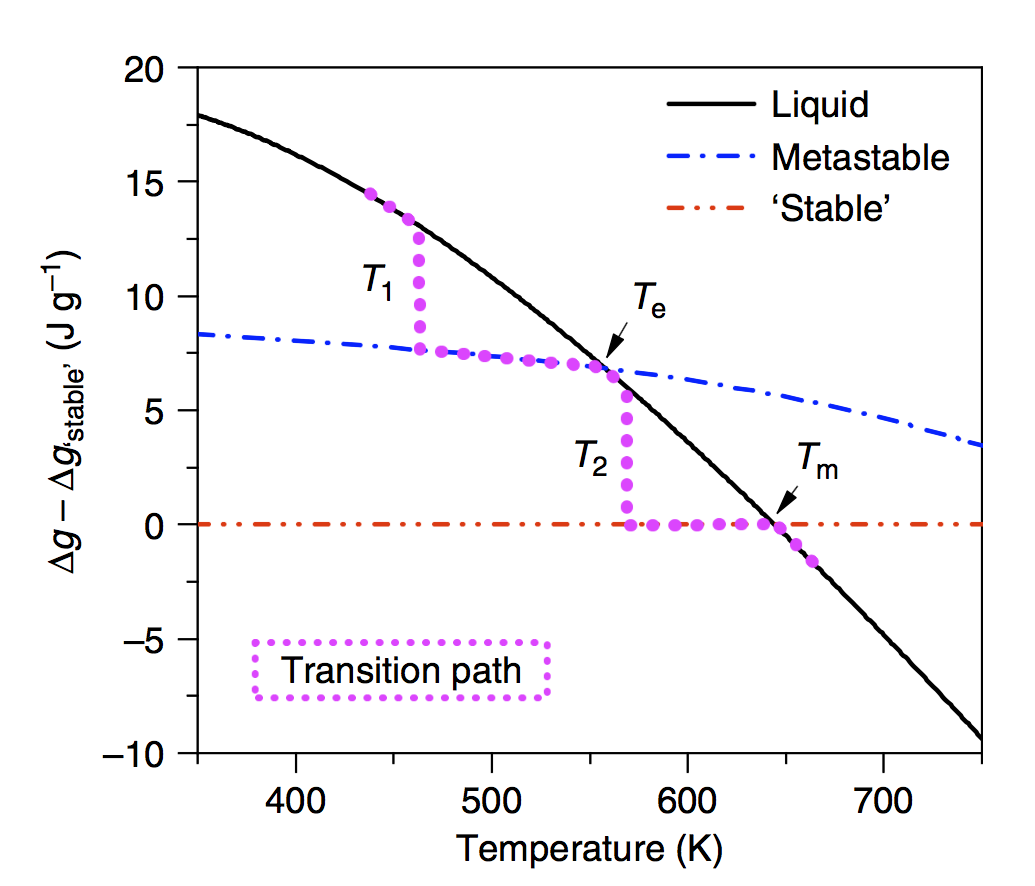Solid-solid Phase Transitions via Melting in Metals
A solid-solid phase transition via an intermediate liquid state has been identified in colloidal systems, but the universality of the phenomenon at atomic scales has not yet been proved, mainly due to experimental constraints. In a recent Nature Communications manuscript, researchers at the Laboratory of Metal Physics and Technolog (LMPT) have now demonstrated via fast differential scanning calorimetry that a similar transition also occurs in metallic systems.
Observing solid-solid phase transitions in-situ with sufficient temporal and spatial resolution is a great challenge, and is often only possible via computer simulations or in model systems. Recently, a study of polymeric colloidal particles, where the particles mimic atoms, revealed an intermediate liquid state in the transition from one solid to another. While not yet observed there, this finding suggests that such phenomena may also occur in metals and alloys.
Researchers at the LMPT present now experimental evidence for a solid-solid phase transition via the formation of a metastable liquid in a metallic glass system. This feature provides further insight into phase transition theory and may also be of great importance for the understanding of new processing techniques, where rapid cooling and heating are applied (e.g. 3D printing of metals) and metastable phases form frequently.
- Solid-solid phase transitions via melting in metals, S. Pogatscher, D. Leutenegger, J. Schawe, P. J. Uggowitzer, J. F. Löffler, Nature Comm. 7:11113 doi:10.1038/ncomms11113 (2016). external pagearticlecall_made external pagesupplementary informationcall_made
- Laboratory of Metal Physics and Technology
- external pageMettler-Toledo Analyticscall_made
- external pageMontanuniversität Leobencall_made

